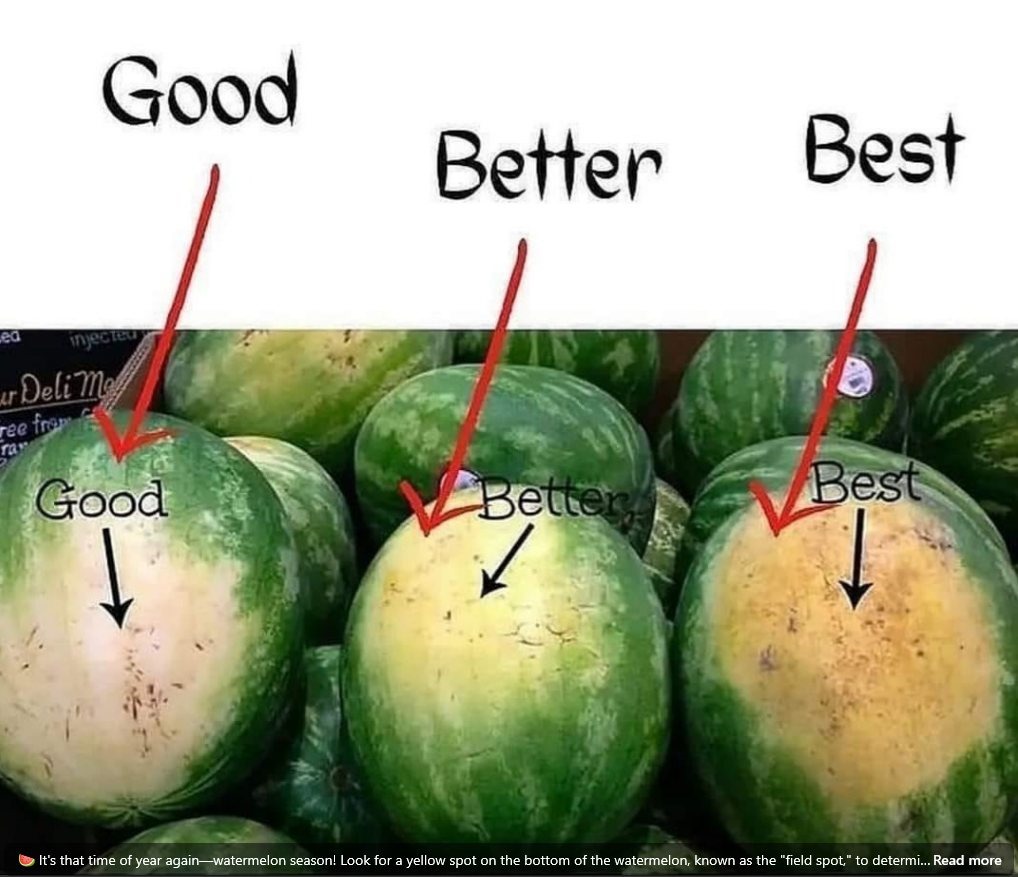Step-by-Step Guide to Picking the Best Watermelon
Go for a Symmetrical Shape
Choose watermelons that are round or oval and symmetrical all around. Lopsided shapes might indicate uneven growth, leading to inconsistent ripeness.
Quick Tip: Avoid fruits with noticeable dents, flattened areas, or irregular bumps. These could be signs of damage or over-ripeness.
Examine the Color of the Rind
A mature watermelon will sport a deep, consistent green color. Matte rinds are generally a good sign of ripeness, while shiny skins often mean the fruit isn’t quite ready.
Quick Tip: Steer clear of watermelons with white streaks or pale patches, as these often signal under-ripeness.
Check the Field Spot
The “field spot” is the patch where the watermelon rested on the ground as it grew. Ideally, this area should be a creamy, buttery yellow. A white or very pale spot can mean the fruit was harvested too soon.
Quick Tip: The darker and more golden the field spot, the sweeter and more flavorful the melon usually is.
Give It a Tap
Gently knock or tap the watermelon’s surface. A ripe melon will produce a resonant, hollow sound, hinting at its juicy interior.
Quick Tip: A dull or muted sound may indicate the fruit is either under-ripe or past its prime. Listen for a crisp echo, which suggests a fresh, ripe watermelon.
Weigh It
When comparing watermelons of similar size, pick the one that feels heaviest. A heavier watermelon usually has higher water content, translating into juiciness and better texture.
Quick Tip: A melon that feels unusually light for its size might be dry or less sweet inside.
Consider the Sugar Content
Certain watermelon varieties, like seedless or mini melons, are naturally sweeter. Familiarizing yourself with varieties at your local market can help you choose a melon that suits your taste. Still, the primary determinant of sweetness is ripeness.
Quick Tip: Don’t hesitate to ask sellers for recommendations on sweeter varieties they might have in stock.
Inspect the Stem or Tail
If the watermelon still has its stem attached, check its color. A green stem can indicate the fruit was picked too early. A dried, brown stem suggests the melon ripened properly on the vine.
Quick Tip: While small, this detail can be an extra clue in confirming ripeness.
Serving and Storing Your Watermelon
Cutting
Once you’ve chosen the ideal watermelon, slice it open with a sharp knife. Remove seeds if desired, or leave them in for a more natural experience. Cut into wedges or bite-sized cubes for easy snacking.
Storage
Watermelon tastes best fresh but can be kept in the fridge in an airtight container for 3-4 days. You can also freeze chunks to add to smoothies or enjoy as a chilled snack later.
Creative Serving Ideas
Watermelon pairs beautifully with:
-
Fresh mint leaves
-
Crumbled feta cheese
-
A sprinkle of chili powder for a spicy-sweet kick
It’s also perfect for juices, sorbets, or tossing into vibrant summer salads.
Conclusion
Selecting a perfectly ripe, sweet watermelon doesn’t have to be a mystery. By paying attention to shape, color, weight, and that signature hollow sound, you’ll be well on your way to enjoying the juiciest fruit of the season. Happy watermelon hunting!

